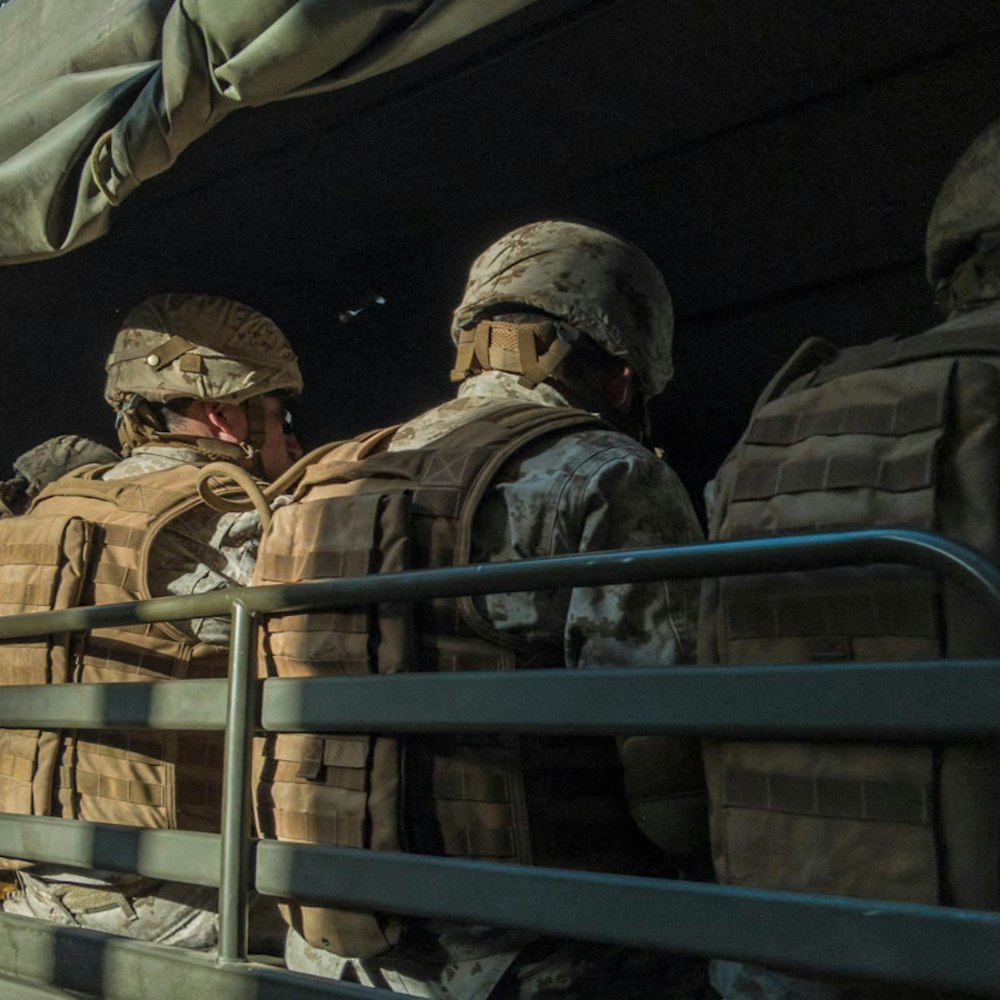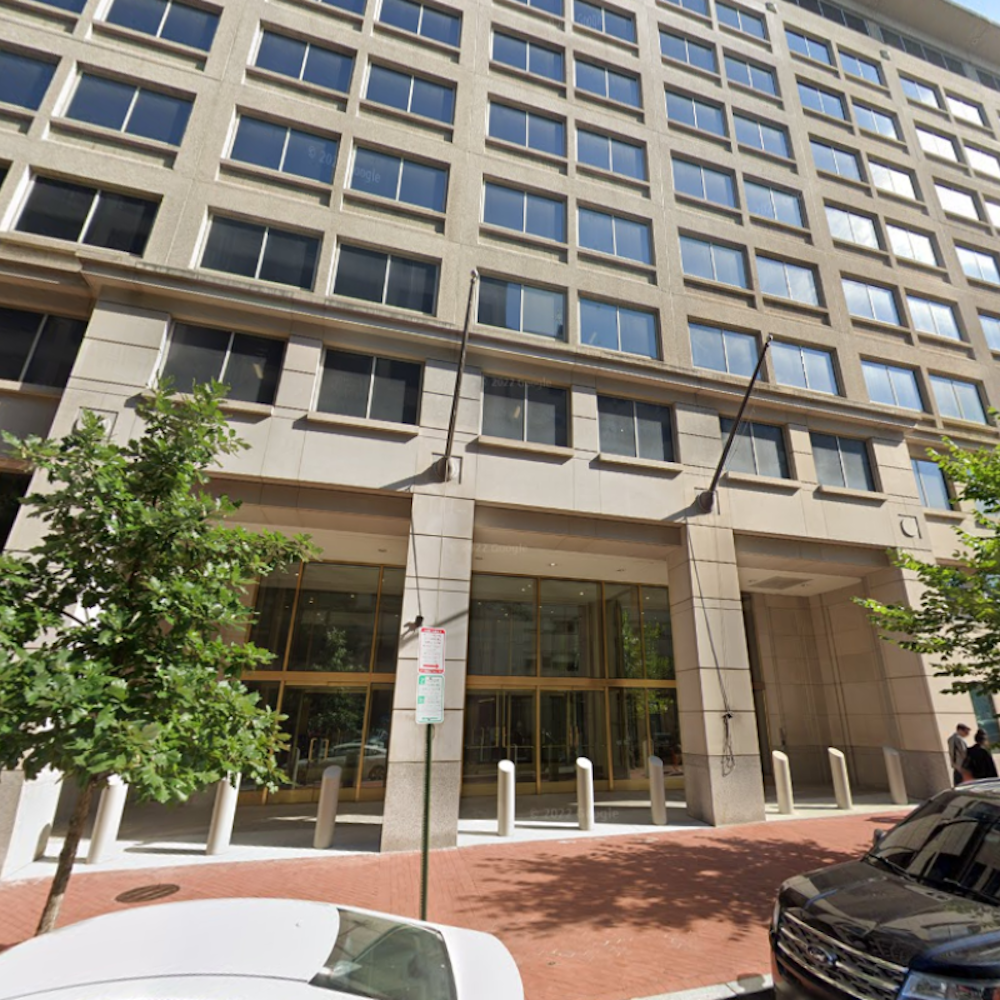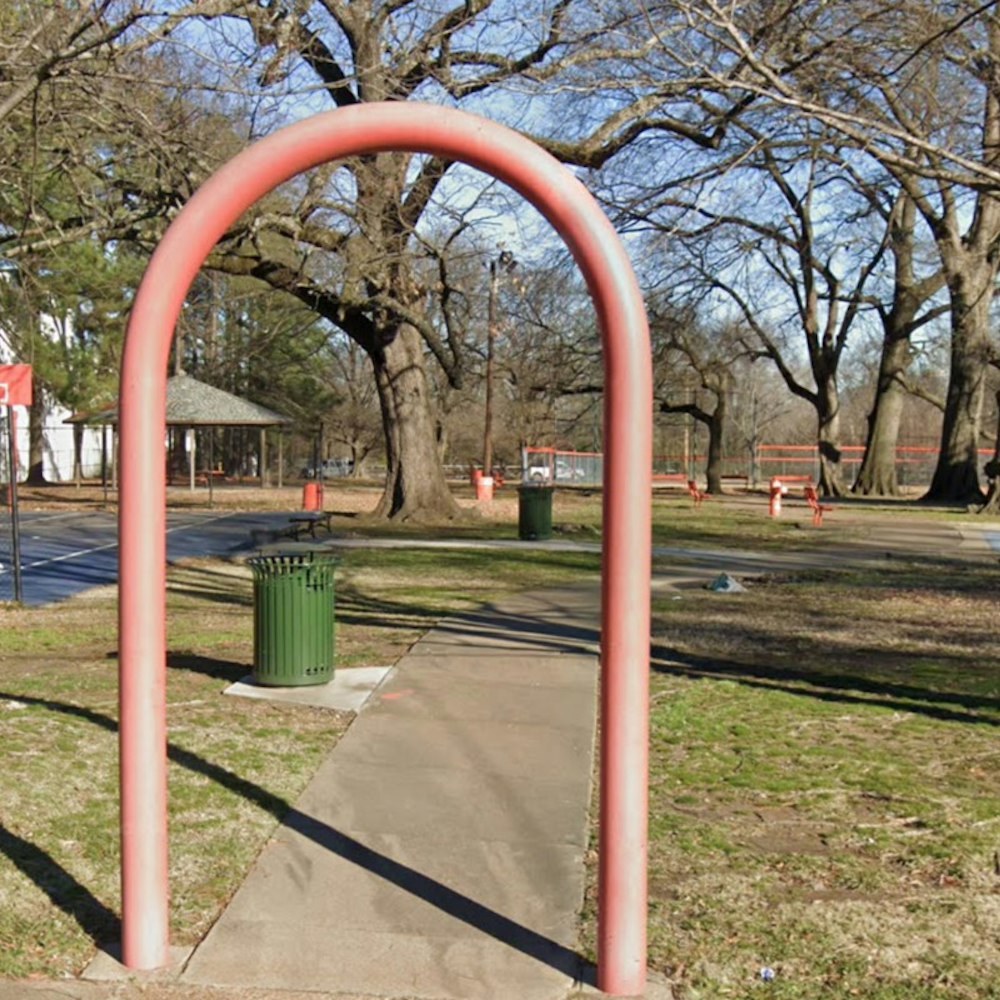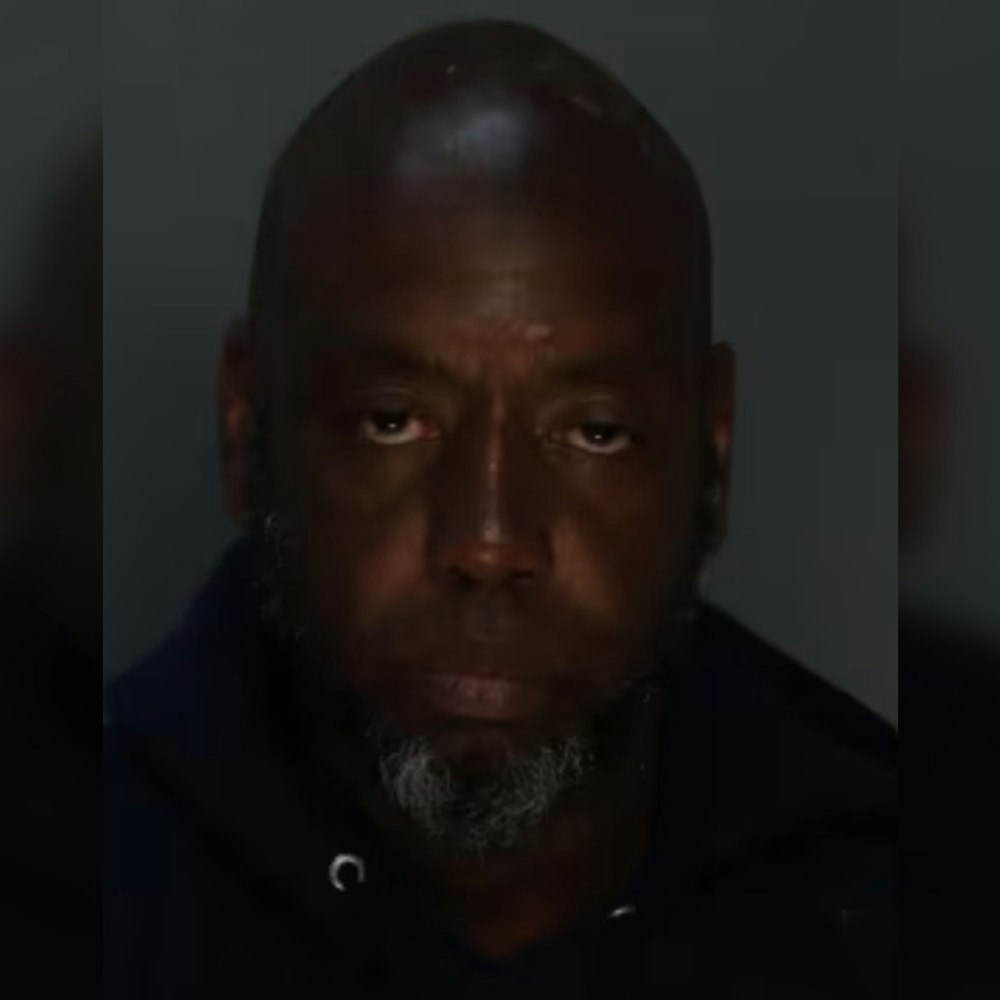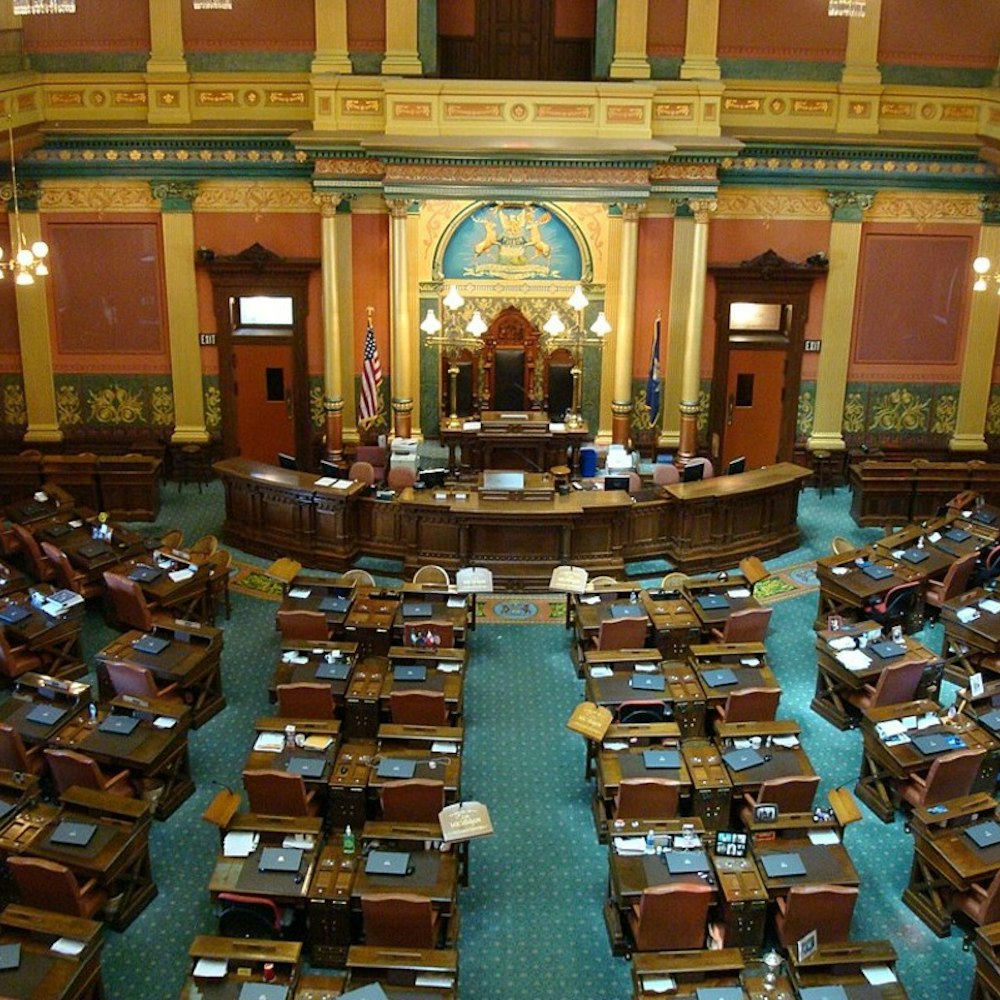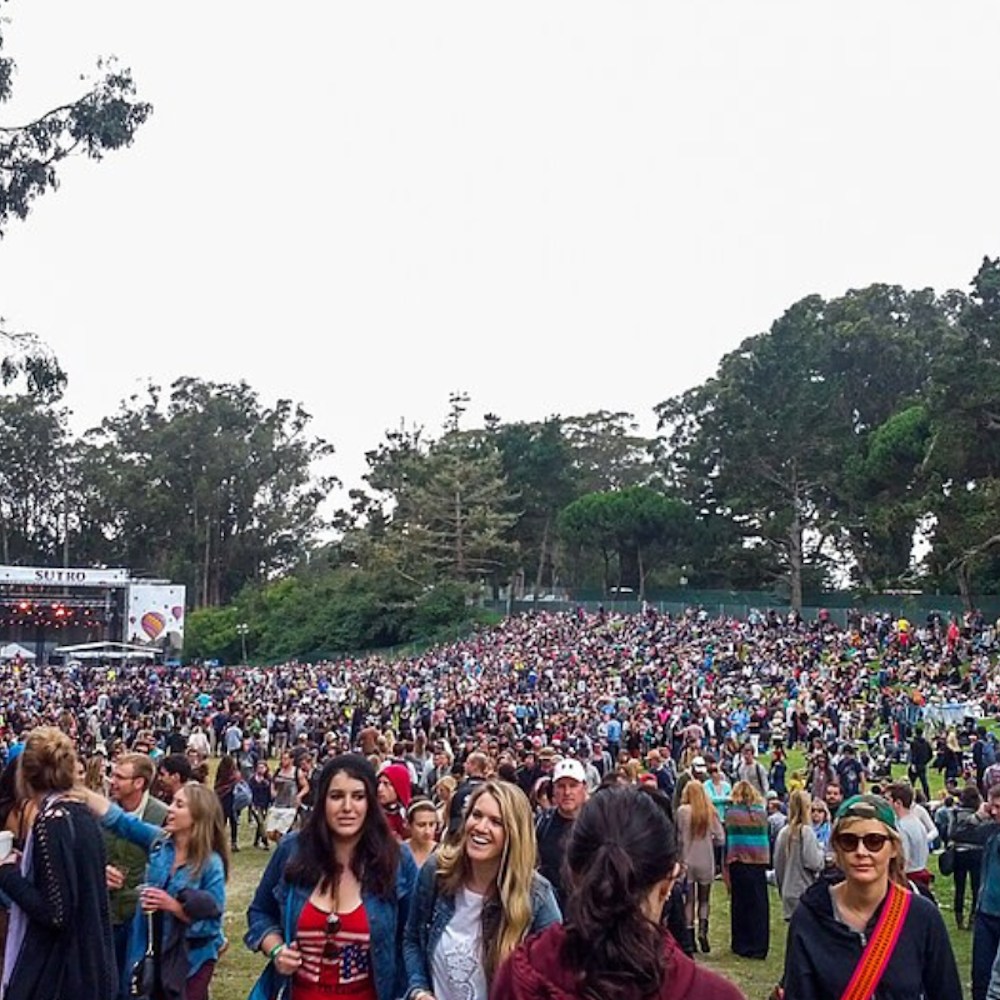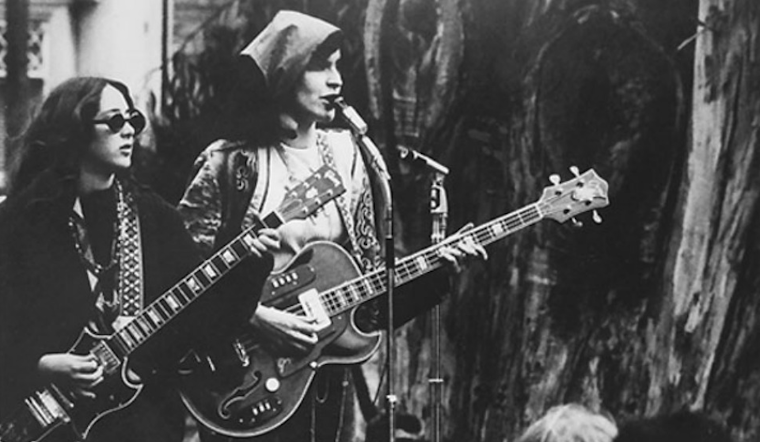
[Editor’s note: this article first appeared in print in August Nation, a locally-published magazine by August Bernadicou that features San Francisco artists. You can order a copy here or find it at local bookstores across the city.]
Denise Kaufman lived the '60s in San Francisco as a guitarist and a vocalist for The Ace Of Cups, a formative all-woman rock band that played with Jefferson Airplane and Jimi Hendrix.
She was born and raised in the city, hung out with the Grateful Dead in Palo Alto, attended Berkeley during the Free Speech Movement, rode the bus with the Merry Pranksters, and much more.
As a member of one of the early female rock bands, she also encountered a different world than her male counterparts. A local DJ once rejected one of her early songs by telling her that “women can’t say that! This can’t be on the radio... it’s too raw.”
In the interview below, she recounts her experiences in the decade and beyond — including a message for the kids on Haight today.
August Nation: Tell me about life on Haight Street in the '60s.
Denise Kaufman: We were all growing into this together. Not just us, but a lot of other young people who were there exploring. People were just there exploring, and if you hadn’t thought of a larger reality you certainly did if you were exposed to psychedelics.
 Denise at the Heliport. Photo via The Ace Of Cups
Denise at the Heliport. Photo via The Ace Of Cups
It became really clear that you were a part of some larger energy. That happened to a lot of people in a very short time. The expression through the scene in San Francisco was like an expression of a transformation. We started to really feel connected to people and realized that we had separateness and were also a part of one energy. It was the medicine of the time that woke people up to the interconnectivity. All of these things became expressions of this awareness.
We took the produce that supermarkets were putting in their dumpsters and went to Golden Gate Park and made food with it to feed people. We started free clinics.... We wanted to take care of each other.
AN: How old were you when you moved to San Francisco?
DK: I was born in San Francisco! I went to an all-girl boarding school in Palo Alto. It was a really amazing thing to be down in Palo Alto at this time.
There was a lot of great music then. Jerry Garcia was playing in his jug and bluegrass bands.
There were a couple cool venues in Palo Alto as well. It was a nurturing time for me. I was in the Stanford Music Club at the university. They let me be the mascot because I was still in high school. I used to go play with that group of folks.
Pigpen [McKernan-ed] and Jerry had a band called the Zodiacs. I hired them for my high school graduation party. They were great.
AN: Were you “political” in the 1960s?
DK: Yeah.... Yeah, I was. In school and then later....When I was in eighth grade at Roosevelt Junior High School in San Francisco, I founded and was president of the Youth for Kennedy Club. I was always very politically mindful. I thought the world could be changed politically.
When I went to college at UC Berkeley — in the fall of 1964 — I really went there because of the political energy. I went to summer school at Stanford in 1964 and it was really sleepy that way.
Then I got to Berkeley and all the tables were set up in the Plaza and everyone was handing out their political information. I was seventeen, a freshmen and took every flier. In a few weeks the campus police came and confiscated the tables. That started the Free Speech Movement. I was active in that from the very get go. I got arrested at Sproul Hall. I got beaten up by the police and taken to the Oakland City Jail. That whole fall semester was pretty luminous because of the Free Speech Movement.
AN: At this time was it more common to get arrested for acting out the First Amendment?
DK: It wasn’t for voicing your opinion.... At this time there were more and more pickets and protests towards businesses in the North that were chains and still racially segregated in the South. For example, when I was 15 or 16 I picketed the Sheraton Theatre in Downtown San Francisco because the Sheratons in the South were still segregated.
When [Ronald] Reagan became governor his mission was to “get these radicals out of the campus!” Of course, J. Edgar Hoover was still the head of the FBI. The FBI was in cahoots with Reagan who was in cahoots with [William] Knowland on the Board of the Regents. Knowland owned the Oakland Tribune and many other businesses. They wanted to shut the students up.
AN: When did you move back to San Francisco from Berkeley?
DK: Well, I didn’t go from Berkeley to San Francisco. For my second semester at Berkeley — and after the Free Speech Movement — I met some people who turned me onto LSD and I started taking LSD.
In the meantime, I was still writing songs. From the time I was 13 or 14, music was everything to me. I grew up around the musical happenings in San Francisco. I was a member of the performing theater group, San Francisco Children’s Opera, for about five years from when I was eight.
During the time of my spring semester at Berkeley — when I started taking LSD — I was playing clubs and I met the guys from the band The Answer. They were still at Berkeley High School. I was 18 and they were 17 and 16. They were really great musicians and cool guys. I didn’t join that band, but I played with them and did things with them.
It was late that spring or early that summer when the band and I went down to a conference in Asilomar near Monterey. The lead guitarist in The Answer was the son of Dr. Samuel Wright, the head of a theological school in Berkeley. There was a big Unitarian conference involving the ministries across the country and the keynote speaker was Ken Kesey. I didn’t know who he was at the time but the band did.
As it turned out, I spent the night on the beach talking with Kesey. A week later he came up to my apartment and said, “You are coming with me, I’ve come to get you. You are on the bus!”
AN: How long were you on the bus for?
Denise Kaufman: I was on the bus from that time until Kesey went to Mexico... when he staged his suicide and went to Mexico. We, the bus, stayed in LA and did some more Acid Tests there.
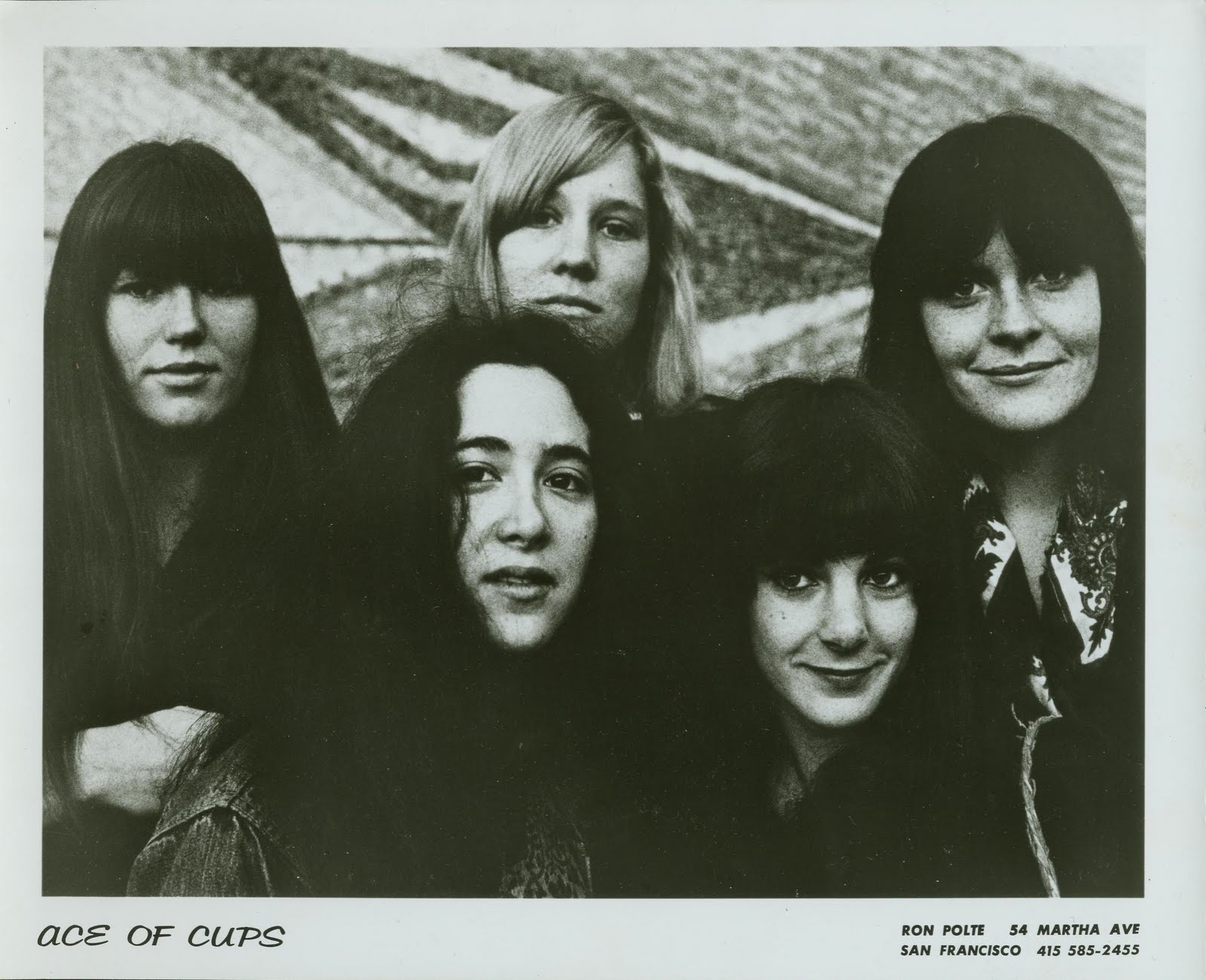 Kaufman, lower left, with the rest of the band. Via this excellent history of the band from Psychorizon.
Kaufman, lower left, with the rest of the band. Via this excellent history of the band from Psychorizon.
Eventually, a lot of the Pranksters went to Mexico to join Kesey, and I went back to San Francisco. I was looking to play music, I didn’t want to go to Mexico!
AN: When did you first become aware of the concept of “hippies,” and were you a hippie? Were there Yippies in San Francisco?
DK: Yeah, I can’t remember when the word started to be used. It seemed to me that it came from the word “hip.”
I was definitely a hippie. I am on a mission to reclaim that word because it’s often used pejoratively. I hear people talk about hippies with some disdain. Not that there weren’t casualties and people behaving unconsciously, but some of the most amazing human beings I ever met were hippies and are hippies if they are still around.
I would say that was later.... The Yippies were certainly active in Chicago and the East Coast. People like Jerry Rubin were going back and forth. I do not think there was ever a Yippies Movement out of the Bay Area.... I could be wrong though.
AN: How did you meet the other members in The Ace of Cups?
DK: They had all met each other and were starting to play together. I met Mary Ellen, the lead guitarist, at Blue Cher’s house on New Year's Eve when it turned from 1965 to 1966. Mary Ellen was there, sitting on a bed and playing blues on a guitar. I had my harmonica and we jammed for a while. She asked me to meet the rest of the girls knowing that she was starting an all-girl band.
I was like, “No way, who would want to play in an all-girl band!?” [Laughs].
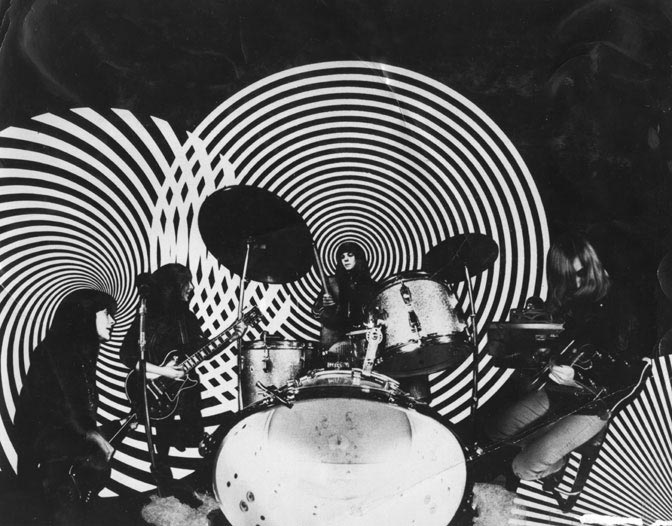 Promo picture at the Heliport. Photo via The Ace Of Cups
Promo picture at the Heliport. Photo via The Ace Of Cups
It was such an outlandish concept to me, I couldn’t even imagine it. I know that sounds so strange now, but at that time and for some years I had only played with guys. It was just something that never entered my mind. I knew women folk singers, but I didn’t know any groups playing in the rock world. It was a novel and outlandish concept. Later when I went over to meet them, we had a really great time. It was silly and intriguing. Our voices blended and we all loved harmonies and singing. It went from there....
AN: We think the Ace of Cups were the first, true all-girl band (that both wrote their own songs and played their own instruments). Do you?
DK: Well, I don’t know about New York, Cleveland or somewhere else but in the Bay Area, yes. Where we were, yup.
AN: Can you talk about the Ace of Cups’ management?
DK: The first manager we had was Ambrose Redmoon. I met him at Mount Zion Hospital where he was in recovery from a car accident that left him paraplegic. Before his accident he had been managing Quicksilver Messenger Service. Since he was in the hospital he turned over that band to Ron Polte. When I met Ambrose I started singing songs for him, and he gave me his poems that I set to music. When I met with the other Ace of Cups members we went to see Ambrose in the hospital and we sang him songs we wrote for him.
He asked to manage us, and he did. Subsequently, a year and half later (maybe two), he turned us over to Ron Polte as well. Ron had Quicksilver already and then he had us.
A lot of the managers of the bands were professionals. They were managers and it was like that’s what they did! Some were like from LA.... They weren’t too interested about what came out of the scene, they were managers and agents.
The music scene in LA was much more connected to the music business, and in San Francisco it was connected to community.
A lot of the managers here were friends of the bands. The managers could be your friend that was better at business. They were like part of the band, and it was a different mindset.
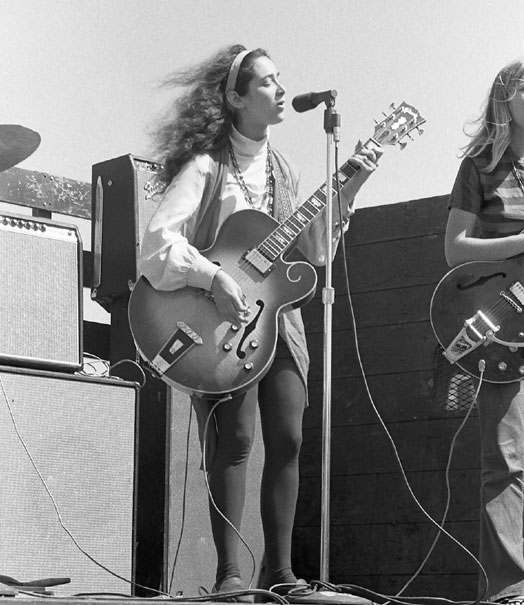 Denise and her guitar. Photo via The Ace Of Cups
Denise and her guitar. Photo via The Ace Of Cups
The record labels at this time almost had a standard, boilerplate contract that bands were supposed to sign. A lot of the bands did. The record companies had art departments and, if you signed a record deal, they were in charge of your cover.
The San Francisco bands did not want to do that. They said, “You know, we have our own artists here. We have great artists that are a part of what we are doing, and we will do our own album covers and presentations.”
That was a big deal to these record labels because they had never had that control questioned before. They wanted the bands, so all the managers got together and strategized how to create contracts that benefited bands, artists and the whole community that was brought along with the record deal.
AN: Was Ambrose the one who named the band?
DK: Yes. He was a mystic.... He was an amazing person and was into astrology and tarot. In the early 1960s in Shasta, California he had a spiritual commune and a group of people that lived with him.
When he met us and heard our music he suggested the name, and we really liked it. He showed us the tarot card and it was for us.
AN: Did The Ace of Cups almost sign anywhere or record in a studio?
DK: Yes there was, and the story is a little bit blurry. There was interest for sure, and we definitely were scouted by a couple of people. Our manager was encouraging us to hold out and not sign anything, but I don’t know if anything really substantial ever came in. Eventually we got offered a deal from Fantasy Records (towards the end) but they wanted all our publishing! When Jefferson Airplane started their own label, Grunt Records, they offered to sign us. By then we were at the end of our days. In the early days — when the energy was right there to record — we didn’t get any substantial offer or any real offer. There was talk....
Compared to Janis or Grace fronting The Airplane, we were really different and we were real hippie chicks. People weren’t used to seeing women play their own instruments. Also, the subject matter of our songs was different — many really distinctly from a women’s point of view.
I think some of the A&R guys would look at us and say, “What are they?” We were women who were clearly hippies. We didn’t look like Hollywood Starlets. Also, the fact we didn’t have one front person.... we all sang. Sometimes we stood up, put our arms around each other and sang “No More War” acapella.
One of my first songs I recorded was with members from The Answer and my friend Lonnie who had the record label Wee Records. He was an African American man and a great drummer. He drummed for Cal Tjader in the Bay Area. Lonnie started this little record label....
When I met him on the streets of Berkeley I had my guitar. He asked me to sing my songs. Then he wanted to go to a record studio to record one of my songs and we did. In those days if you had a ‘45 you took to a guy named Bill Gavin who had a newsletter called The Gavin Report.
He determined what got on the radios because DJs did not pick their music. He made the playlist, and it was basically payola. Lonnie took this record to Bill Gavin and he said, “Women can’t say that! This can’t be on the radio.... it’s too raw.”
Back then you had to be a certain kind of woman. The Ace of Cups started less than a year later than this. It wasn’t like now, you couldn’t just put your music on the Internet. There was real control over how music got out there.
AN: How did The Ace of Cups end up on Jefferson Airplane’s “Volunteers” album?
DK: Well, we toured with them and we ended up on a number of albums. We were young women who were singing together all the time. If somebody needed backup vocals we were an easy thing to grab. We had a blend and sang together all the time.
The Airplane asked us to sing on “Volunteers,” and we worked on the vocal arrangements for “Farm Song” and “Turn My Life Down.” We did vocals for Nick Gravenites, Mike Bloomfield and other people too.
AN: Can you talk about the free concerts you played in Golden Gate Park and the Panhandle?
DK: Some of them were bigger and some of them were smaller. We did so many free gigs. One of the things that was emblematic of the real San Francisco bands was their sense of being a part of the community. They were both supported by the community and supportive of the community.
A man named Cory Arnold did a chronology of almost every gig we played. There are some missing, but he did an amazing job. Most of them were free gigs. We weren’t unique in this, there were a lot of bands that did things to support and keep the community nourished and surviving. Our manager always said, “the best music always happens at the benefits.”
[Denise explains some of The Ace of Cups’ songs on their new album.]
*Taste of One: We just recorded that this week. I sing it. It wasn’t to get someone back in my life, it was an ode to a larger sense of what love is. It’s an ode to an expansive experience and definition of love. Love is not something that can be lost.
*Stones: It’s Mary Gannon singing. I wrote the “in love with The Rolling Stones” part and Mary wrote the rest. It was about dealing with judgment (“people who live in glass houses should throw stones”). It’s about giving people a little more space and leeway. It’s really fun because we just worked on that song, and it will be on the record too.
The funny thing about The Rolling Stones was the part about “I’m in love with The Rolling Stones because their grass is greener”...
When we played the Altamont Festival I was pregnant. Before evening when it was late afternoon someone threw a beer bottle at me and I got hit in the head. I was in the hospital with a skull fracture and had to have neurosurgery.
When we went to The Rolling Stones about this their office said they were going to pay for the hospital bills. Of course they never did!
I could have lost my child.... If I hadn’t taken the route I did with the surgery I would have lost my baby. I don’t have any love for The Rolling Stones at this point! In The Bill Graham Exhibit there is a quote of him saying that the Altamont was “the blackest day in entertainment.”
*Simplicity: I wrote that song for my friend Hugh Romney who later became Wavy Gravy. He was a muse and psychedelic teacher to me. I always had the most profound psychedelic experience when I was with him. Whether I was on a psychedelic drug or not, just being around him was always heart opening. That song is about him. There was a period of time where I just wanted to be around him all the time and it wasn’t possible. I wrote it after having a really profound few days of taking acid and having experiences. I just missed him and wrote that song to him.
*Waller Street Blues: Mary Gannon sang the introduction line. She was from New York and was basically saying it may be only Waller Street, but to us it’s a great address like 5th Avenue in New York. 1080 Waller Street was the house where Mary and Marla lived and where we first started rehearsing. “Waller Street Blues” probably was the first song we wrote together. We were just sitting there with our friends writing about “getting busted” and the things that were going on. One of the bands’ good friends got busted there. He tried to throw pot down the garbage chute but the police went down there and got it. People spent a lot of years in jail for things that are legal now.
AN: Tell us about the making of the new album!
DK: It’s a lot of our old songs and a few of our new ones. The challenge of the album is approaching material that we wrote 45 years ago and being both faithful to it and open to new ways of doing it. It’s a really interesting process.
Luckily, we have this really wonderful producer. I can’t imagine how we would do it without him with what he’s bringing to it. His name is Dan Shea. Thus far, we have only been doing lead vocals and we just started background vocals. We are doing both songs and what we call “vignettes” which are little, small things that go between songs. They are various expressions. They are a piece of a song we’ve written or something like that. They are like little jewels that are between the longer songs.
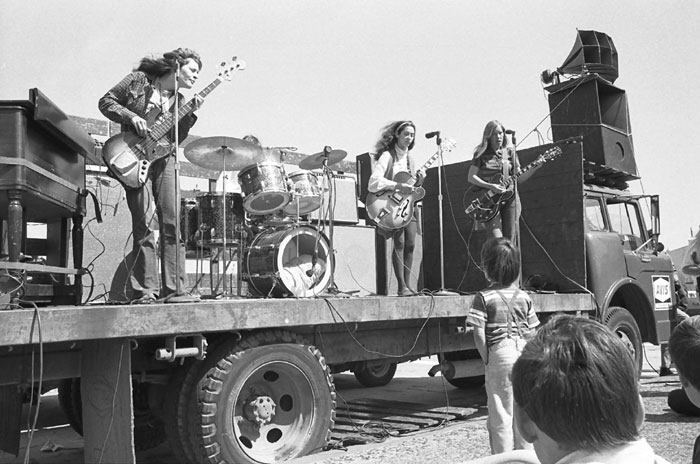 Playing on a flatbed. Photo via The Ace Of Spades
Playing on a flatbed. Photo via The Ace Of Spades
It’s a complete, amazing journey. We never got to do it in the old days.... In a way we are really lucky because we are appreciating it more now.
Are you changing any of the lyrics or music?
DK: We are mostly not changing the lyrics. Maybe a word or two here or there but I did that then!
If you listen to pretty much about half of The Ace of Cups’ songs that are out in the world those songs are from just a random night that got recorded. There were nights when we changed the lyrics. Of course, the songs evolved over time. If we had been playing the song for over a year the lyric evolved. A lot of things weren’t cast in stone, and they were changed. That being said, we are pretty faithful to what most people have heard. There are a few lyrics that we are changing. Sometimes, for me, I would have pretty much a whole song together but there was a line or a couple lines where it just didn’t work. We loved the songs and we wanted do them, but they had these place- holder lines. Then, later, the real lyric came forth. There are some of those instances on the new album. Finally I got that word to that line! [Laughs].
AN: On the “It's Bad For You But Buy It!” CD are any of the songs from a demo or studio recording?
DK: No, the only song that was a studio recording was “Boy, What’ll You Do Then” which I had written and recorded before I was in The Ace of Cups.
AN: Is that song about Jann Wenner, the founder of “Rolling Stone” magazine?
DK: Jann Wenner? Yeah.... Yeah.... It was, in a big sense. As a songwriter something can inspire you in a relationship, but it’s not literal. Not every single word is something about Jann. It is definitely inspired by something that was happening energetically between he and I at that time.
AN: When was the last time you went to Haight Street? What do you think of Haight Street now?
DK: The last time was probably eight weeks ago. You know.... it’s a little bit of a shadow of its former self in a lot of ways. [Laughs]. One thing that I don’t know — me not living there — is what juicy, community things are happening. There are a lot of sad-looking folks on the streets with clearly not many resources. What made it so awesome was the vibrancy and intention of the community. Since that’s gone, it’s just a place trying be in its former glory.
I don’t live there, so maybe there are proactive and wonderful things happening to make it busy and vibrant and conscious, but I didn’t see that when I was there.... I didn’t get a sense of that community energy that used to be there. But, I could be wrong.
AN: What advice would you give to street kids on Haight Street?
DK: Wow.... Find something that you really want to do in this world, and do it. Don’t just hang out and take strange drugs. Don’t waste the opportunity that your life is. Do something that you can get really into. What I want to see is that everyone can something that they are up to that is also for the betterment of this planet, world and each other. Plug into it, and do it with passion.
AN: What is one thing you deal with everyday that you would change?
DK: Wow.... Let me think. Personally, there is nothing in my life. It cannot be more perfect; it’s basically magical and miraculous. I am so grateful.
In term of this world.... I would love to change the consciousness that feels we can use the world’s resources in a completely stupid and unconscious way. I want people to start taking care of other people.... Like Wavy says, “To share instead of compare....” I want us to all start pulling together for the greater good in a much more powerful way.
 Photo via The Ace Of Spades
Photo via The Ace Of Spades
We need to think about how we get around in this world. We need to change the way we eat and take better care of ourselves! In communities, we actively need to pull together and create public policy that looks seven generations down the road. Let’s make our decisions with a much longer view of humanity and this earth. We need to and it is possible.
Denise Kaufman’s Five Favorite San Franciscans:
Reverend Cecil Williams
Dr. David Harris
Bobby McFerrin
Marc Benioff
Mimi Silber
Denise Kaufman’s Five Favorite Books:
Season of the Witch by David Talbot
Being Mortal by Atul Gawande
Subversives by Seth Rosenfield
Civility by Stephen L. Carter
The Rainman’s Third Cure by Peter Coyote

